Review
After six months and just over 5,000 miles, our long-term Volvo XC40 Recharge Ultimate has returned to the manufacturer and the impression it has left behind is overwhelmingly favourable.
Although the model was originally launched in 2018, it still looks as fresh and modern as its newer rivals and this is largely to do with the brand’s continual evolution of the model.
As an example, one of the new features in our XC40’s model year was the inclusion of a Google-powered navigation system to ensure the car’s infotainment offering is as up-to-date and futureproof as anything else on the market.
Since we took delivery of our test car, the manufacturer upgraded the powertrains for the following model year to make the range more efficient and have a greater range.
This means instead of the front-wheel drive, 69kWh battery, 234PS drivetrain of our vehicle, which gave a WLTP electric range of up to 259 miles, the single-motor version is now rear-wheel drive, 241PS and with a range of up to 286-mile.
The updates have not been limited to upgrades for the new model year XC40s either: thanks to the use of over-the-air (OTA) software updates, our car also improved while we’ve been running it.
In my last report I talked about how the latest update had enhanced a number of infotainment/connectivity functions, including displaying the remaining battery range in miles on the driver instrument panel instead of solely through the infotainment screen.
The XC40 is definitely not the most efficient BEV on the market but during out time with it, which included the colder winter months as well as the warmer spring, we averaged 3.4 miles/kWh.
This efficiency figure varied significantly depending on the temperature.

One day in particular summed this up well. When I left home in the morning it was 7C having been as low as 3C overnight. I hadn’t preconditioned the battery and the efficiency for the 150-mile outward journey was 3.1 miles/kWh.
The day had warmed up to 14C by the time I started my return journey, and this time the efficiency was 3.7miles/kWh.
On this longer route – and, indeed, on all journeys - the XC40’s powertrain was smooth and offered plenty of performance when needed. It also complemented the refined, comfortable experience for both driver and passengers well.
As a whole, the XC40 was also really easy to live with. There’s ample interior space for a car of its size, while the cabin design, build and quality of materials is definitely up there with the best in the premium segment.
For me, one of the best convenience features was its front boot – also referred to a frunk, or froot, depending on your preference.
One of my (tiny) issues with EVs is that there is usually nowhere to store the charging cable where it does not get in the way, whether this in the boot or a passenger footwell. In either case, I have to move the cable if I put a person or cargo in and want easy access to the cable.
The frunk provides a handily-sized compartment under the bonnet for the charging cable, keeping it handy and out of the way.
The downside is that it is opened by using the usual bonnet release found on an ICE car. The mechanism is a little bit clunky and it would have been nice to have an improved way of opening it.
I think you always know that if something like this is the largest gripe you’ve got about a car after six months behind the wheel, then that vehicle is an impressive package.
OTA update adds much-needed range readout
Five months into my time with our long-term Volvo XC40 Recharge and – given the manufacturer’s long history of safety excellence – it seems a bit remiss that I haven’t yet gone into some of the advanced technologies it has.
Part of the reason is because fortunately very few of these features have been called into action, so have been happily working away in the background in case something happens.
However, it is stacked with the technologies. Across the range the XC40, which has been awarded a five-star Euro NCAP rating, provides City Safety (including pedestrian and cyclist detection, front collision warning), lane keeping aid, road sign information display, numerous airbags, slippery road alert.
These are just a few of them; the list of standard safety tech is long.
Our Ultimate trim level model also features Volvo’s driver awareness suite of safety features, which includes blind spot information, cross traffic alert and rear collision warning and mitigation.
One of my favourite safety technologies is blind spot indicators and the Volvo’s system works really well, clearly alerting you when a vehicle is in the danger zone and intervening to stop you from veering into the path of overtaking traffic if needed.
Cross traffic alert is also a great asset when you’re reversing out of a parking space and cannot see if anything is approaching from either side.
I don’t tend to use cruise control, but our XC40 has an adaptive system which will follow the vehicle ahead at a set distance right down to a standstill.
However, once the vehicle ahead moves off again, the Volvo doesn’t automatically, instead giving the driver a visual alert this is happening: something which I’ve needed many times as my old brain fails to remember that I need to press the accelerator to start moving again.
Another technology – not safety related – which I’ve become a big fan of is the XC40’s ability to receive over-the-air (OTA) software updates.
When the car arrived with us I was disappointed there was no clear indication of battery range left on the driver instrument display - the remaining capacity was shown in percentage terms, not in miles, until there were just 30 miles left.
It was only a minor inconvenience as although the remaining range could viewed by using the car’s infotainment system, it was not as easy to see how many miles I had left as it almost every other electric vehicle I’ve driven.
However, that is no longer an issue as, after its latest OTA update, the remaining range in miles is now happily displayed on the driver instrument display.
During its time with us, the XC40 has been pretty active in receiving OTA updates and the system has worked well. Most have been for updates to the infotainment system as Apple CarPlay.
The update is downloaded in the background, so it does not impact using the car, and when it is ready to install the system tells you how long it will need before the vehicle can be used again and asks for your permission to start.
Without OTA, if an update is safety critical a car would have to go to the dealership to receive it, but if not – as in the XC40’s case – it would have to wait until the car was booked in for something else, such as routine maintenance.
However, OTA means I was able to get the enhancements when they were ready, instead of having to wait for them.
Warmth brings welcome range boost
After a wet and miserable winter, spring has finally sprung and this has had had a couple of knock-on effects on our long-term Volvo XC40 Recharge.
Firstly, the warmer weather has expectedly meant its efficiency – and therefore its range – increase, while it has also changed my demands on the car’s practicality.
Like any BEV, the XC40’s range suffers in the cold and we saw the predicted range from a full charge typically fall to around 180 miles over the winter. The WLTP figure for our vehicle is 264.
After its, last full charge, however, it had a predicted range of 236 miles.
This wasn’t quite enough for me to complete a recent 250-mile round-trip from my home to High Wycombe without stopping for a top-up, but this journey did highlight the effect the cold has on Volvo’s range.
When I left first thing in the morning it was 7C having been as low as 3C overnight. I hadn’t pre-conditioned the battery and the efficiency of the outward trip was 3.1 miles/kWh.
The day had warmed up to 14C by the time I started my return journey, and the efficiency for this trip was 3.7 miles/kWh.
With the warmer weather here and the Volvo on our fleet for a couple more months yet, I’m hoping the range will edge closer to the WLTP figure.
Secondly, spring means I need to prepare my garden for the summer, so I’ve been to my local garden centre for manure and bags of compost.

This provided a different challenge to the Volvo’s practicality. Until then, it had been used mainly to carry just people (there’s plenty of room for front-seat occupants, while those in the rear have similar room to those in comparable SUVs) and golf clubs.
The boot has been adequate for the golf equipment as a full bag fits in diagonally across the 452-litre boot, but my trip to the garden centre needed more room than this.
Due to a miscalculation, I decided I needed a dozen bags (six would actually have been adequate), and when I rolled the heavy trolley up to the car I wondered how it was going to go – at that moment there seemed more bags than cargo space.
However, the XC40 was more than up to the challenge. Its rear seats folded down simply with a press of the buttons at the top of the seat backs to form an almost flat load floor and the bags fitted in easily, two deep, two wide and three high.
The boot lip sits flush with the floor as well to make loading and unloading easier.
Since it joined the Fleet News fleet, I’ve become a big fan of the XC40 Recharge through its many qualities, including its ride, refinement and quality, and the experiences of the past month have only added to its appeal.
Google system impresses
One of the major upgrades Volvo has made to its XC40 range has been the inclusion of Google services into its infotainment system. I’m a big fan.
I’m an Android smartphone user and, whenever possible, I use Android Auto in cars because it lets me use Google Maps for navigation as well as use a specific app on my phone to listen to podcasts.
This always involves the sometimes hit-and-miss process of connecting my phone to a car, but the Volvo system means I don’t have to go through this.
Google Maps is pre-installed, while the infotainment system also has the Google Play Store so you can install apps of your choice as well. It also uses Google Assistant for voice-activated functions.
You can log directly into the infotainment system using an existing Google log-in (or create a new one) and access your preferences and any map locations you’ve searched for on your phone.
Apple smartphone users can use CarPlay to connect to the infotainment system.
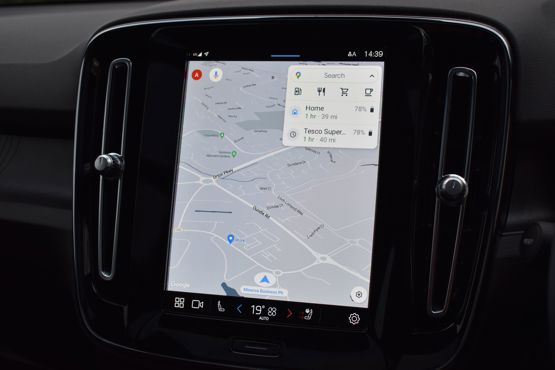
The system is elevated further through its use of the XC40’s two screens. The main one is the upright-mounted nine-inch touchscreen on the centre console, while the TFT driver’s instrument panel is customisable.
My preferred setting is to have the navigation displayed between the speed and power dials, meaning I can just glance down instead of down and across to follow any directions.
Our range-topping Ultimate trim level model is also fitted as standard with a 12-speaker premium sound system by Harman Kardon.
For those interested in the audio specs, it also features Doby Pro Logic II surround sound, a subwoofer and Dirac Unison sound optimisation system. For those, like me, who don’t understand these things, it sounds great! I listen to a lot of podcasts and there’s a real clarity and richness to voices, while – despite my sometimes questionable taste – it also excels with music.
Cold weather range tested
Taking delivery of a battery electric vehicle (BEV) just ahead of a winter which has seen the lowest temperatures for a number of years isn’t necessarily the best timing.
Cold temperatures usually have a detrimental impact on the range a BEV and it is no different for our Volvo XC40 Recharge Ultimate.
At times, the car, which has an official WLTP range of up to 264 miles, has seen its predicted range drop to around 170 miles. This is no worse than other electric vehicles, but just means the driver has to be prepared for this possibility when charging and planning journeys.
Although the remaining range is not displayed on the main instrument cluster – battery capacity is reported as a percentage – you can access a detailed breakdown through the infotainment screen.
As well as the expected range, this shows best- and worst-case scenarios, as well as a breakdown of the energy usage through three categories: speed, driving style and climate control.
The climate control graph was the biggest shock: I was aware that using the heating has a big impact on range, but, until I saw this displayed, the size of the drop hadn’t really sunk in.
This was further highlighted by using the in-built Google Maps for navigation. In the XC40 Recharge, alongside the estimated time of arrival, it displays the remaining charge when you get to your destination.
On the coldest days, this changed by up to eight percentage points on just a 35-mile journey when I switched between having the heating on or off, which was a real eye-opener. There is also a button to optimise the range, which restricts the climate control function.
Fortunately, I’ve been able to mitigate this by turning the heating down and the standard heated steering wheel and heated seat on to keep warm. Heated seats are also fitted in the rear.
These touches help elevate the experience of running the XC40. The cabin has plenty of room for four adults, while refinement is excellent with little road or wind noise seeping into the interior, while the ride is exceptional.
Volvo XC40 Recharge Ultimate joins our fleet
One of the certainties of listening to Heart Xmas over the festive period is that Elvis Presley’s Blue Christmas has either just been played, was on air or was just minutes away from being heard.
And like Elvis, my Christmas was blue. Not in the sad definition of the word – I had a lovely break, thank you – but because I took delivery of our newest long-termer just before the festive period.
For not only is our fully-electric Volvo XC40 Recharge Ultimate Fjord Blue on the outside, it has an optional £150 pack fitted meaning the carpets, mats and door trims are the same colour as well.
While it is certainly a departure from the usual dark, sombre colours found in the cabins of premium SUVs, it works well and is actually a refreshing change. Any trepidation turned out to be misplaced.
There are plenty of other nice touches with the XC40. As expected, it’s a good-looking SUV with a high-quality cabin, but Volvo has included a compartment under the bonnet where the engine is otherwise found in the XC40’s petrol siblings stablemates, which is ideal for the charging cables.
This solves the ongoing conundrum of where to store cables so they do not get in the way or compromise use of the boot.
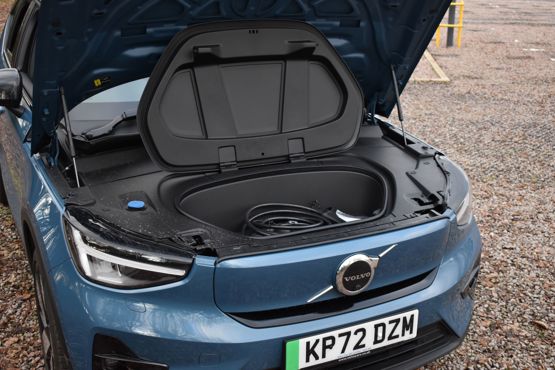
Our single-motor model has an official range of 264 miles and an efficiency of 3.2-3.4 miles/kWh. Its 150kW on-board DC charger means its 69kWh battery can be charged from 10% to 80% capacity in 27 minutes. It also has a 7kW on-board AC charger, so it takes 11 hours to fully charge from an appropriate wallbox.
These figures are different for models ordered after December 1: a number of revisions to have been introduced to improve range and efficiency.
Among the changes are a switch from front- to rear-wheel drive as well as a more powerful motor (241PS, up from 234PS). The updated model offers a range of up to 286 miles, with efficiency improved to 3.2-3.6 miles/kWh.
The cold weather and use of heating has skewed the efficiency of our XC40 over the first few hundred miles, so we have not achieved anything near the official figures yet.

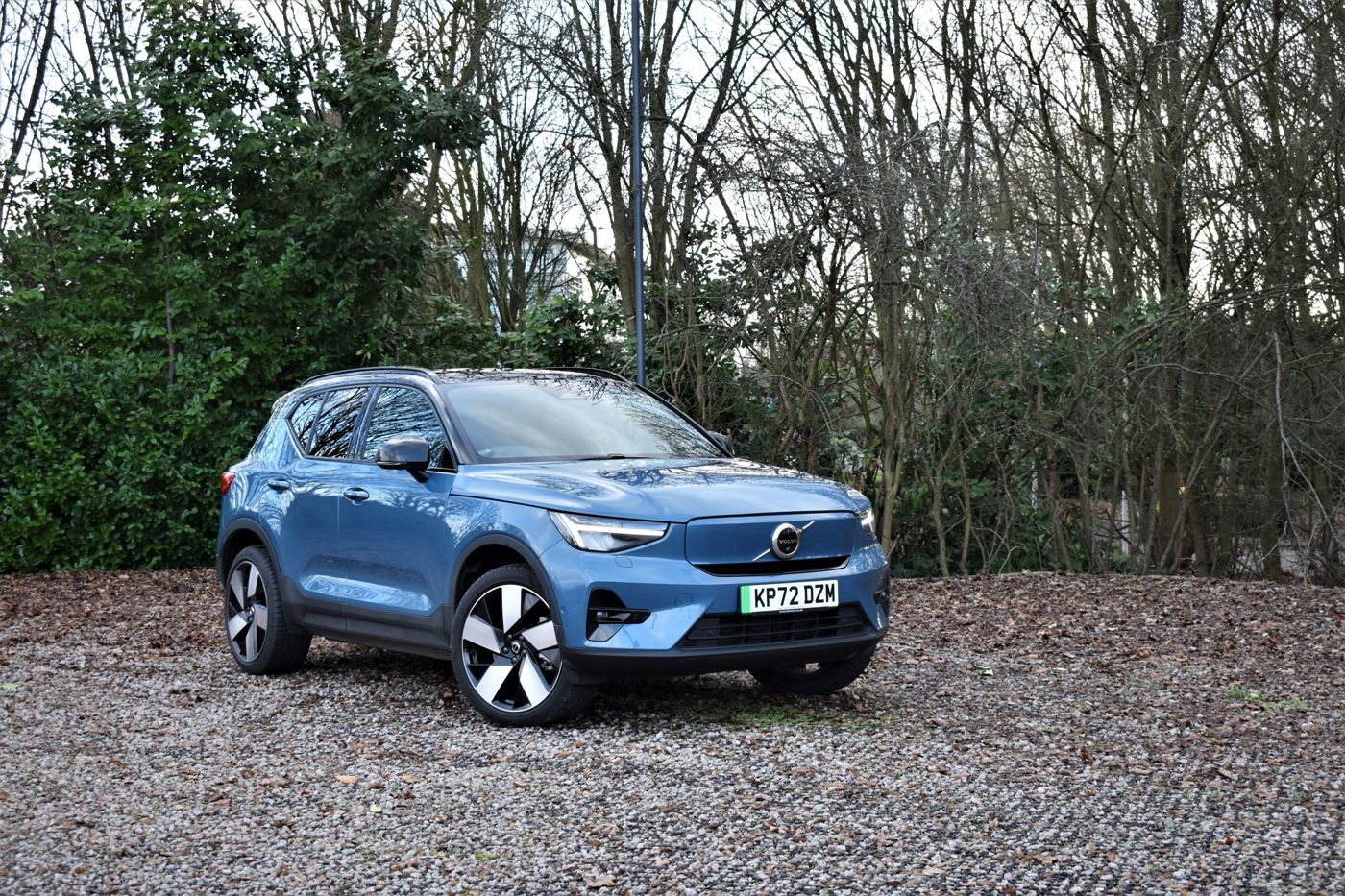





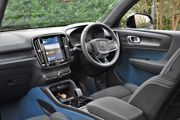

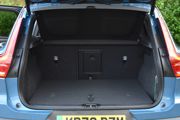




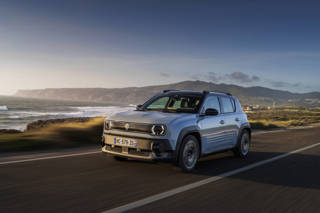
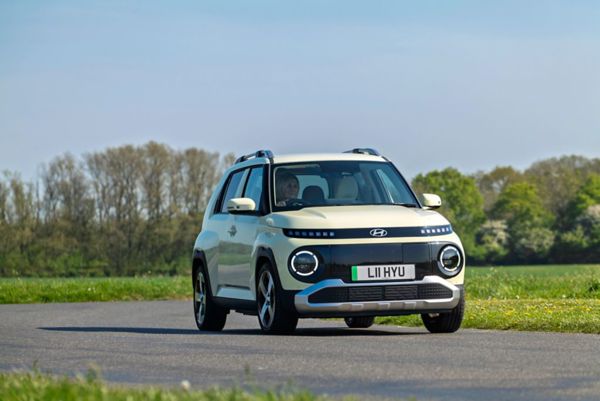


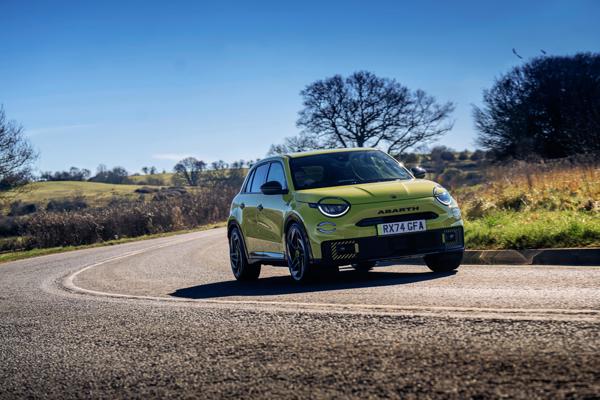
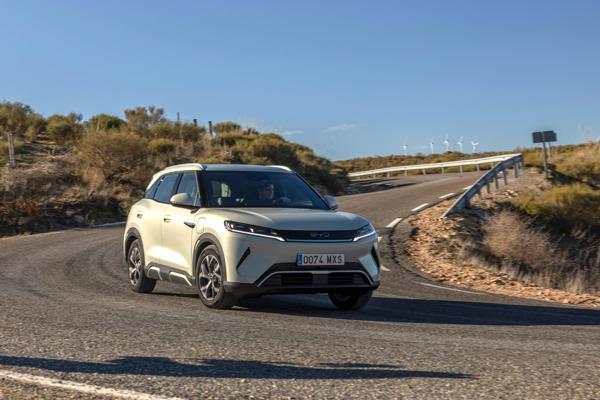



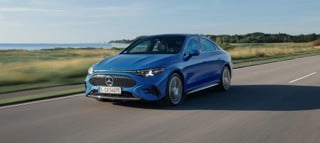
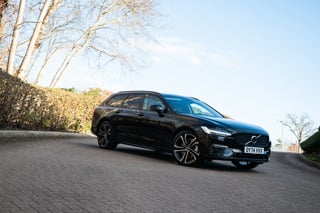
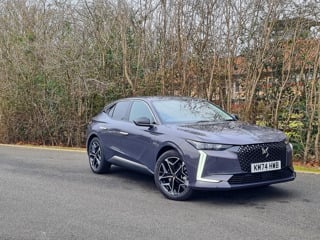












Login to comment
Comments
No comments have been made yet.